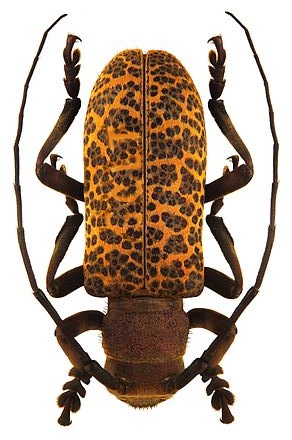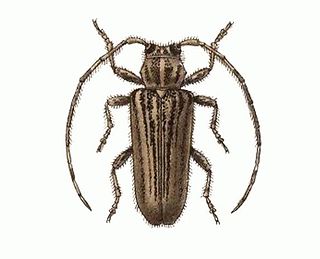
The western mosquitofish is a North American freshwater poeciliid fish, also known commonly, if ambiguously, as simply mosquitofish or by its generic name, Gambusia, or by the common name gambezi. Its sister species, the eastern mosquitofish is also referred to by these names.

The little swift, is a small species of swift found in Africa and southwestern Asia, and are vagrants and local breeders in southern Europe. They are found both in urban areas and at rocky cliffs where they build nests in a way typical of all members of the order Apodiformes. The genus name Apus is Latin for a swift, thought by the ancients to be a type of swallow without feet. The Latin specific affinis means similar to or related to, but in this case the species that the little swift supposedly resembles is not clear from the description. A population formerly considered to be an eastern subspecies of little swift is now separated as a distinct species, the house swift.

The Blyth’s frogmouth is a species of bird in the family Podargidae. They are brownish or rufescent brown with a slightly round bill and tail, and have tufts of bristles in front of the eyes and at the base of the bill. Batrachostomus occur from India and Sri Lanka, across mainland southeast Asia and as far as Borneo, Java, and Sumatra. More specifically, the Blyth’s frogmouths are scattered between southeastern Myanmar and Indonesia. Like other frogmouth species, they are insectivorous.

The black-chested jay is a species of bird in the family Corvidae.

The intermediate horseshoe bat is a bat species of the family Rhinolophidae that is very widespread throughout much of the Indian subcontinent, southern and central China and Southeast Asia. It is listed by IUCN as Least Concern as it is considered common where it occurs, without any known major threats.
ESTOLAS was a proposal for a hybrid type of aircraft that was developed from 2012 to 2014 in a project funded by the European Commission.

Estola is a genus of longhorn beetles of the subfamily Lamiinae, containing the following species:
Estola benjamini is a species of beetle in the family Cerambycidae. It was described by Stephan von Breuning in 1940. It is known from Colombia.
Estola brunnescens is a species of beetle in the family Cerambycidae. It was described by Stephan von Breuning in 1940. It is known from Colombia and Venezuela.
Estola nigropunctata is a species of beetle in the family Cerambycidae. It was described by Stephan von Breuning in 1940. It is known from Brazil.
Estola nigrosignata is a species of beetle in the family Cerambycidae. It was described by Stephan von Breuning in 1940. It is known from Brazil.
Estola obliquelineata is a species of beetle in the family Cerambycidae. It was described by Stephan von Breuning in 1940. It is known from Brazil.
Estola fuscopunctata is a species of beetle in the family Cerambycidae. It was described by Stephan von Breuning in 1943. It is known from Brazil.
Estola microphthalma is a species of beetle in the family Cerambycidae. It was described by Stephan von Breuning in 1942. It is known from Brazil.
Estola freyi is a species of beetle in the family Cerambycidae. It was described by Stephan von Breuning in 1955. It is known from Trinidad.
Estola basinotata is a species of beetle in the family Cerambycidae. It was described by Henry Walter Bates in 1866. It is known from Brazil, French Guiana, and Ecuador.

Estola vittulata is a species of beetle in the family Cerambycidae. It was described by Henry Walter Bates in 1874. It is known from Panama, Mexico and Venezuela.
Estola cerdai is a species of beetle in the family Cerambycidae. It was described by Martins and Galileo in 2009. It is known from French Guiana.
Estola acrensis is a species of beetle in the family Cerambycidae. It was described by Galileo and Martins in 2009. It is known from Brazil.
Estola insularis is a species of beetle in the family Cerambycidae. It was described by Blair in 1933.






